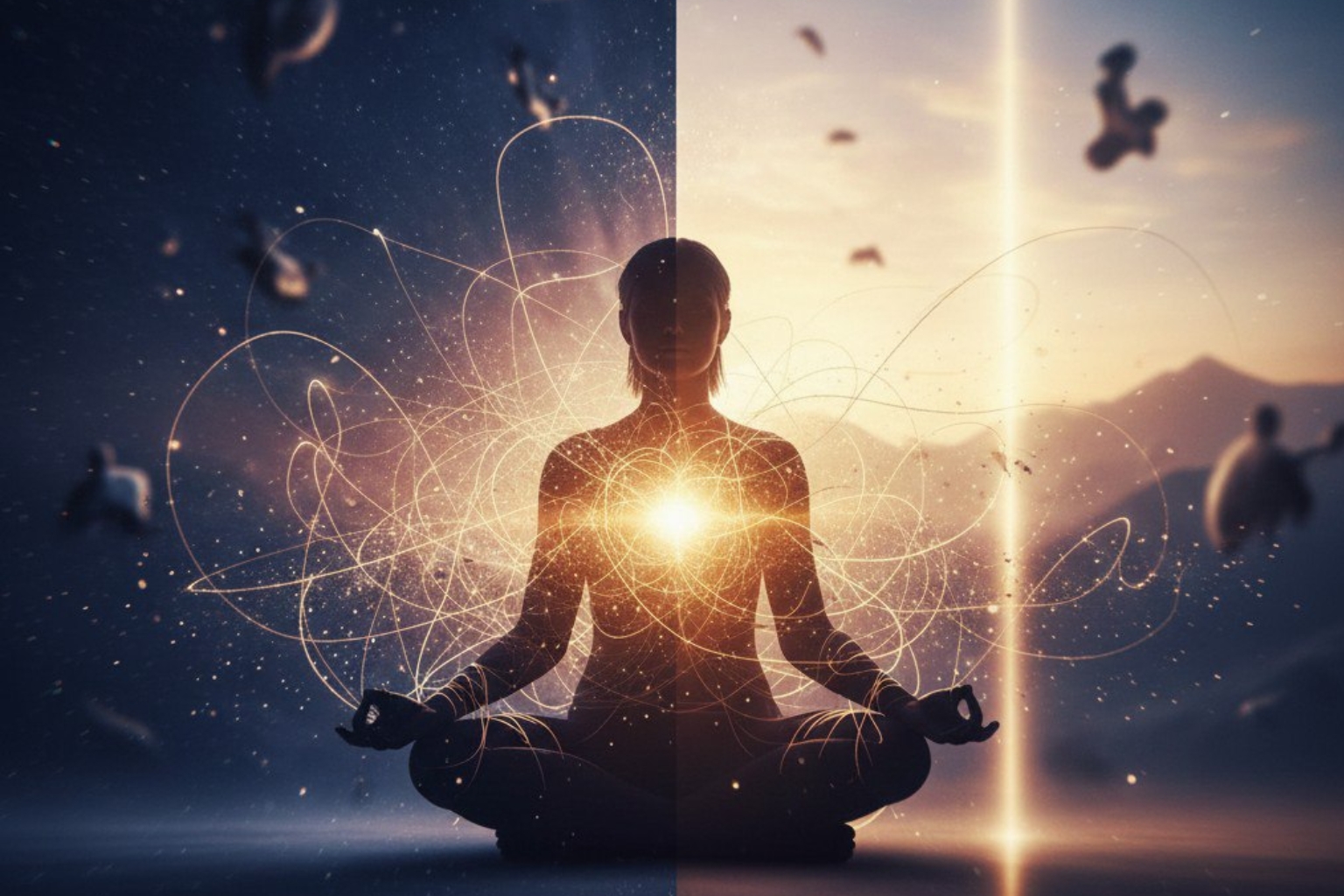Having explored the dynamics of Control in relationships in the previous post, this section now turns to the powerful force of Attachment in relationships. While attachment reflects the natural human need for connection, it can, when distorted, form invisible chains that restrict personal freedom and prevent the formation of truly fulfilling relationships. Attachment — the hidden emotional connection — often dictates how individuals relate to others without even realizing it.
This post examines how attachment patterns are shaped, the ways unhealthy attachments manifest, and how the Cutting the Ties Method—developed by Phyllis Krystal—can assist in cultivating secure, authentic, and loving connections.
Understanding Attachment in Relationships
Phyllis Krystal’s work serves as a powerful lens through which to view attachment in relationships.
Defining Healthy Attachment (Secure Connection)
A healthy attachment—or secure connection—is characterized by balanced interdependence, where individuals are able to:
- Experience both intimacy and independence without fear.
- Experience a space of equality.
- Trust and respect both themselves and others.
- Express personal needs and emotions openly and without fear of judgment.
- Navigate conflict with resilience, maintaining connection despite challenges.
- Derive mutual support and joy from relationships, without seeking validation or control.
Exploring Unhealthy Attachments — The Invisible Chains That Bind
The unseen energetic, psychological, and emotional ties — like invisible umbilical cords — bind individuals to parents, authority figures, institutions, societal roles, or self-ingrained self-perceptions. Often, they drive individuals to act against their own best interests, making choices rooted in fear, guilt, or outdated obligations.
Many of these attachments form in childhood, when individuals are most impressionable and dependent on caregivers. The bonds created in those early years — both nurturing and restrictive — often persist subconsciously into adulthood. Without conscious awareness, they influence thoughts, behaviors, and emotional responses long after the original relationships have changed or ended.
Attachment is Not LOVE
A BIG one. A clear distinction can be made between love — which is free, generous, expansive, and liberating — and attachment — which is needy, clinging, possessive, fearful, and suffocating. When individuals let go of unhealthy ties, love is not lost — it is set free. And in that freeing, individuals free themselves.
Attachments Are Based on Fear or Dependency
Attachments are rarely about love — they are about fear, dependency, guilt, or a sense of duty. When individuals remain tied to someone through anxiety over their opinion, they aren’t really loving them — they are seeking approval or avoiding conflict. In effect, they hand over control of their emotions and decisions, becoming emotionally subservient to others’ expectations.
Such attachments may arise from:
- Fear of losing approval or affection.
- Guilt over defying expectations or disappointing others.
- A sense of obligation that suppresses personal autonomy.
- Dependence on others for validation, identity, or self-worth.
How Fear Drives Unhealthy Attachment
Underlying many unhealthy attachments are pervasive fears, which serve as the driving forces behind these invisible bonds:
- Fear of Abandonment — A persistent anxiety about being left alone, unloved, or rejected.
- Fear of Engulfment or Loss of Self — Concern that closeness in relationships could compromise individuality or diminish personal autonomy.
- Fear of Unworthiness — The belief that one is inherently unlovable or undeserving of healthy connection.
These fears can perpetuate cycles of behavior that push others away and sabotage intimacy instead of building a genuine connection.
Impact of Unhealthy Attachment
The effects of unhealthy attachments extend beyond individual emotions and influence both personal well-being and relationship health:
- On Personal Well-being: Unhealthy attachments often lead to persistent anxiety, diminished self-esteem, emotional instability, and a continuous search for external validation. They may result in feelings of loneliness within relationships or a sense of being overwhelmed by intimacy. Attachment saps autonomy. It stops individuals from being aware of their true, inner self. Instead of living freely, they live in reaction to those around them — sometimes even long after the people involved have left their lives.
- On Relationship Health: Relationships shaped by unhealthy attachments frequently exhibit patterns of co-dependency, conflict, emotional distance, or cycles of clinging and withdrawal. These dynamics obstruct authentic intimacy, trust, and mutual satisfaction.
Identifying Attachment Chains
Gaining self-awareness is the essential first step in recognizing and addressing unhealthy attachment patterns. Reflecting on questions such as the following may provide insight:
- Do you constantly worry about your partner's feelings for you, even when there's no clear reason?
- Do you often feel the need to merge completely with a partner, losing your sense of individuality?
- Do you struggle to express your true feelings or needs, fearing rejection or conflict?
- Do you find yourself pulling away or creating distance when a relationship starts to get serious or intimate?
- Do you tend to idealize partners at first, then become easily disappointed or critical?
- Do you feel uncomfortable with emotional displays, either your own or others'?
- Do you find yourself repeatedly attracted to partners who are emotionally unavailable or inconsistent?
Releasing Unhealthy Attachment with The Cutting Ties Method
The Cutting the Ties Method, as developed by Phyllis Krystal, offers a symbolic and practical approach for releasing unhealthy energetic bonds and reclaiming personal autonomy. The process includes the following steps:
- Identify the Source of Control: Recognize relationships or attachments — whether positive/nurturing or negative/restrictive — where there is attachment.
- Initiate the Cutting Process: The Cutting the Ties Method serves as a powerful tool for letting go of unhealthy ties in both relationships and controlling imprints—such as negative habits, fears, traumas, conditioning, limiting beliefs, and more. For relationship CUTs, the identified individuals (step 1) are the ones from whom symbolic ties must be severed. The process begins with a relationship cut. It is subsequently followed by symbol cuts—symbols that represent strong emotional residues such as fear, anger, guilt, or other lingering effects in these relationships.
- Reclaim Inner Security and Wholeness: By cutting ties, allow inner peace and completeness to emerge. The method serves as a means of affirming that personal security and freedom originate from within, not from external sources.
Cutting these ties does not mean cutting off relationships. It isn’t about walking away, ghosting, or burning bridges. It is about healing wounds to foster secure, fulfilling bonds — to love and care for others as a free individual, not as a puppet pulled by strings of old fears or unmet needs. Spiritually, it is about releasing identification with fear, control, and ego-bound expectations, and letting go of the illusion that security, worth, or fulfillment come from others. It points towards the deeper spiritual aim of transcending attachment to the material and recognizing the Self as inherently free and complete.
Next Steps
Blog 5 will examine the pervasive influence of dependency and explore strategies for cultivating genuine self-sufficiency in relationships.


